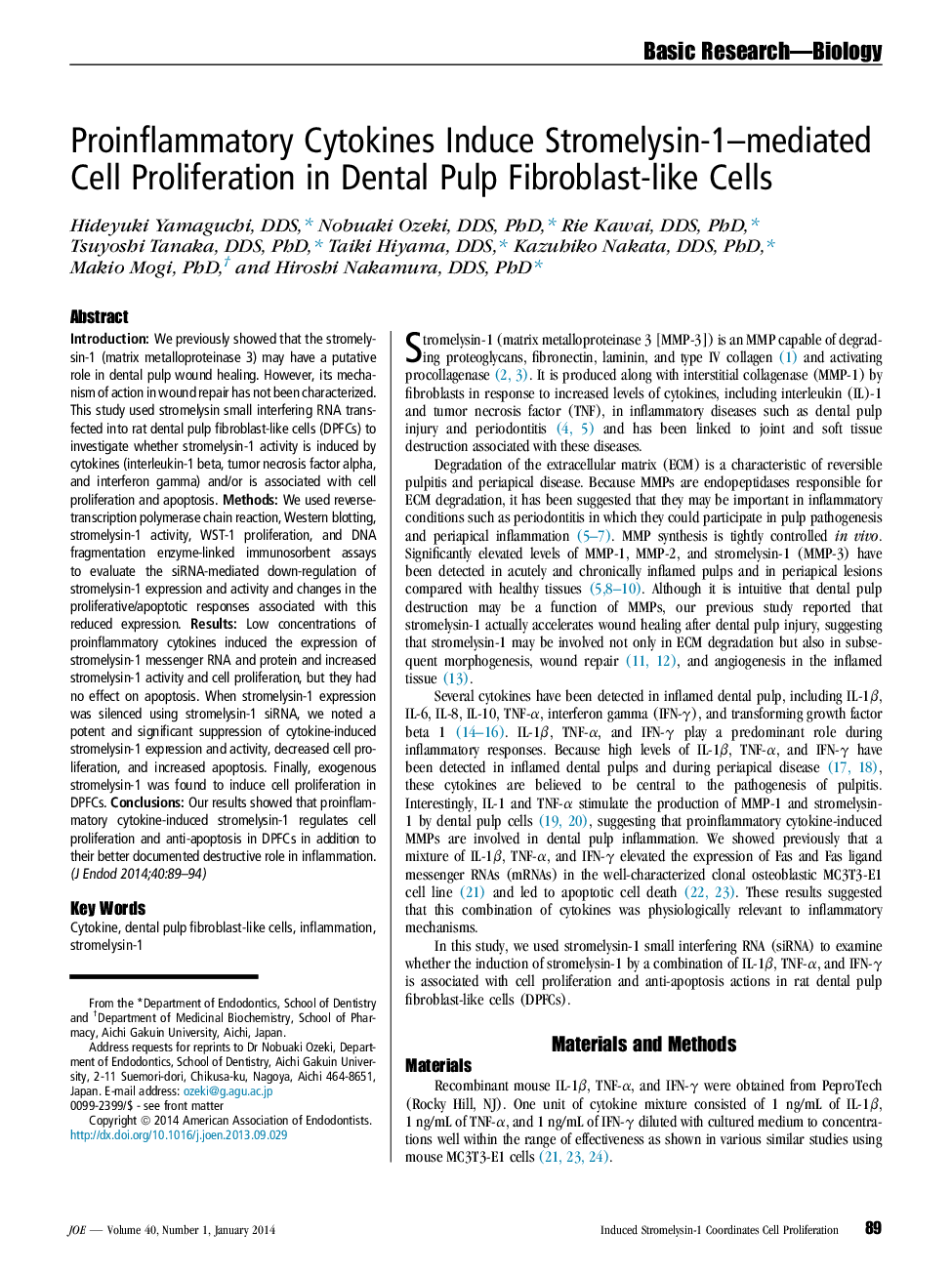| Article ID | Journal | Published Year | Pages | File Type |
|---|---|---|---|---|
| 3146937 | Journal of Endodontics | 2014 | 6 Pages |
IntroductionWe previously showed that the stromelysin-1 (matrix metalloproteinase 3) may have a putative role in dental pulp wound healing. However, its mechanism of action in wound repair has not been characterized. This study used stromelysin small interfering RNA transfected into rat dental pulp fibroblast-like cells (DPFCs) to investigate whether stromelysin-1 activity is induced by cytokines (interleukin-1 beta, tumor necrosis factor alpha, and interferon gamma) and/or is associated with cell proliferation and apoptosis.MethodsWe used reverse-transcription polymerase chain reaction, Western blotting, stromelysin-1 activity, WST-1 proliferation, and DNA fragmentation enzyme-linked immunosorbent assays to evaluate the siRNA-mediated down-regulation of stromelysin-1 expression and activity and changes in the proliferative/apoptotic responses associated with this reduced expression.ResultsLow concentrations of proinflammatory cytokines induced the expression of stromelysin-1 messenger RNA and protein and increased stromelysin-1 activity and cell proliferation, but they had no effect on apoptosis. When stromelysin-1 expression was silenced using stromelysin-1 siRNA, we noted a potent and significant suppression of cytokine-induced stromelysin-1 expression and activity, decreased cell proliferation, and increased apoptosis. Finally, exogenous stromelysin-1 was found to induce cell proliferation in DPFCs.ConclusionsOur results showed that proinflammatory cytokine-induced stromelysin-1 regulates cell proliferation and anti-apoptosis in DPFCs in addition to their better documented destructive role in inflammation.
